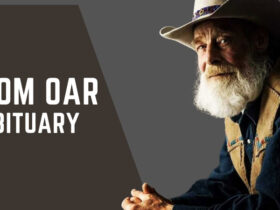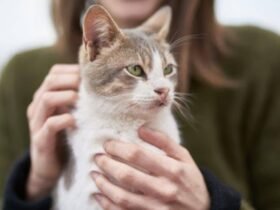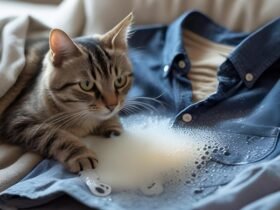Selecting a dog breed that aligns with your lifestyle is essential for a fulfilling pet ownership experience. While all dogs offer companionship, certain breeds come with unique challenges. This article delves into the top 10 breeds known for their demanding characteristics, aiming to provide prospective owners with the knowledge needed to make an informed choice. Remember, the term “worst” is subjective; every breed requires a matching owner ready to meet its specific needs.
1. Afghan Hound
The Afghan Hound is the epitome of dignity and aloofness, traits that stem from their centuries-old heritage as hunting dogs in the mountains of Afghanistan. Their stunning, silky coat requires regular grooming, and their independent nature often translates to a perceived stubbornness during training. Owners need patience and a gentle hand to navigate the breed’s unique personality traits, making them a challenging yet rewarding companion for the right person.
Quick Facts:
- Highly independent and can be difficult to train.
- Requires regular, extensive grooming.
2. Chow Chow
Chow Chows carry an air of nobility, matched only by their loyalty to their family. Originating from China, where they were bred for guarding, hunting, and pulling, their distinctive lion-like mane and aloof demeanor require an owner who respects their need for independence. Early socialization and firm, consistent training are key to integrating this majestic breed into a household as a well-mannered pet.
Quick Facts:
- Distinctive lion-like appearance and blue-black tongue.
- Known for their stubbornness and independence.
3. Shar-Pei
The Shar-Pei, with its deep wrinkles and blue-black tongue, is a testament to the breed’s ancient Chinese heritage, where they served as farm and guard dogs. This breed requires a committed owner aware of their potential health issues, such as skin and eye conditions. Shar-Peis are known for their loyalty and affection towards their family, but they demand early socialization to ensure they develop a balanced temperament.
Quick Facts:
- Deep wrinkles and was originally bred for farm work and guarding.
- Requires early socialization to prevent aggression and shyness.
4. Alaskan Malamute
Alaskan Malamutes, with their wolf-like appearance and boundless energy, were bred to carry heavy loads over long distances in the Arctic. They thrive in environments where they can exert their strength and stamina. Prospective owners should be prepared for a dog that requires ample space to roam and a significant amount of daily exercise to maintain their physical and mental health. Their friendly nature makes them poor guard dogs but excellent companions.
Quick Facts:
- Bred for endurance and strength, requiring a lot of exercises.
- Friendly and sociable, not suitable as guard dogs.
5. Rottweiler
The Rottweiler’s impressive physique and keen intelligence have earned them a spot as one of the most versatile working breeds, excelling in roles from guardian to service dog. They form deep bonds with their owners, displaying an unwavering loyalty that necessitates responsible training and socialization from an early age. Their protective instinct is strong, making it essential for owners to channel this trait positively through training and social interactions.
Quick Facts:
- Originally used to drive cattle and pull carts.
- Protective nature requires responsible training.
6. Bulldog
Bulldogs, with their iconic wrinkled face and amiable nature, are beloved companions known for their courage and determination. Despite their somewhat intimidating appearance, Bulldogs are incredibly affectionate and form strong bonds with their families. Potential owners should be aware of the breed’s health challenges, including respiratory and joint issues, necessitating regular veterinary care to ensure their well-being and comfort.
Quick Facts:
- Distinctive wrinkled face and pushed-in nose.
- Prone to health issues requiring attentive care.
7. Dalmatian
The Dalmatian’s striking spotted coat and dynamic energy have made them a favorite among dog enthusiasts worldwide. Originally bred to run alongside carriages, they possess a high level of stamina and require regular, vigorous exercise. Their friendly and playful nature makes them excellent family pets, but potential owners should be prepared for the commitment needed to keep them physically and mentally stimulated.
Quick Facts:
- Unique spotted coat and originally carriage dogs.
- High energy levels require ample exercise.
8. Siberian Husky
Siberian Huskies are renowned for their breathtaking beauty and spirited disposition. Bred by the Chukchi people of Siberia for sled pulling, these dogs are equipped with a thick coat to withstand cold temperatures and an innate desire to run. Huskies are known for their friendly demeanor but require an owner who can provide them with the exercise and mental stimulation they need to thrive.
Quick Facts:
- Endurance and ability to withstand cold temperatures.
- Known for their escape skills and need for secure containment.
9. Shih Tzu
Shih Tzus, once the cherished pets of Chinese royalty, are small in size but possess a robust personality. Their long, flowing coats require daily grooming to maintain their luxurious appearance. Despite their adorable looks, Shih Tzus can exhibit a stubborn streak, especially during training. They thrive in environments where they can receive plenty of attention and affection from their owners. For an in-depth look at their temperament, consider reading about why Shih Tzus can be a challenging breed.
Quick Facts:
- Royal favorites with a long, flowing coat.
- Can be stubborn; require patient training.
10. German Shepherd
German Shepherds stand as one of the most intelligent and capable dog breeds, widely recognized for their versatility in various fields, including law enforcement and search-and-rescue. Their loyalty and protective instincts make them excellent family pets, provided they receive the structured training and socialization necessary to harness their potential positively. Owners must commit to ongoing training and engagement to foster a well-behaved and balanced dog.
Quick Facts:
- Highly intelligent and versatile, used in various roles.
- Requires structured training and socialization.
Conclusion
Owning any of these breeds comes with its set of challenges, but with the right preparation, understanding, and commitment, the experience can be incredibly rewarding. Each breed’s unique characteristics and needs highlight the importance of choosing a dog that aligns with your lifestyle and capabilities as an owner. By embracing the responsibility and dedicating yourself to their care, you ensure a loving and fulfilling relationship with your canine companion.












